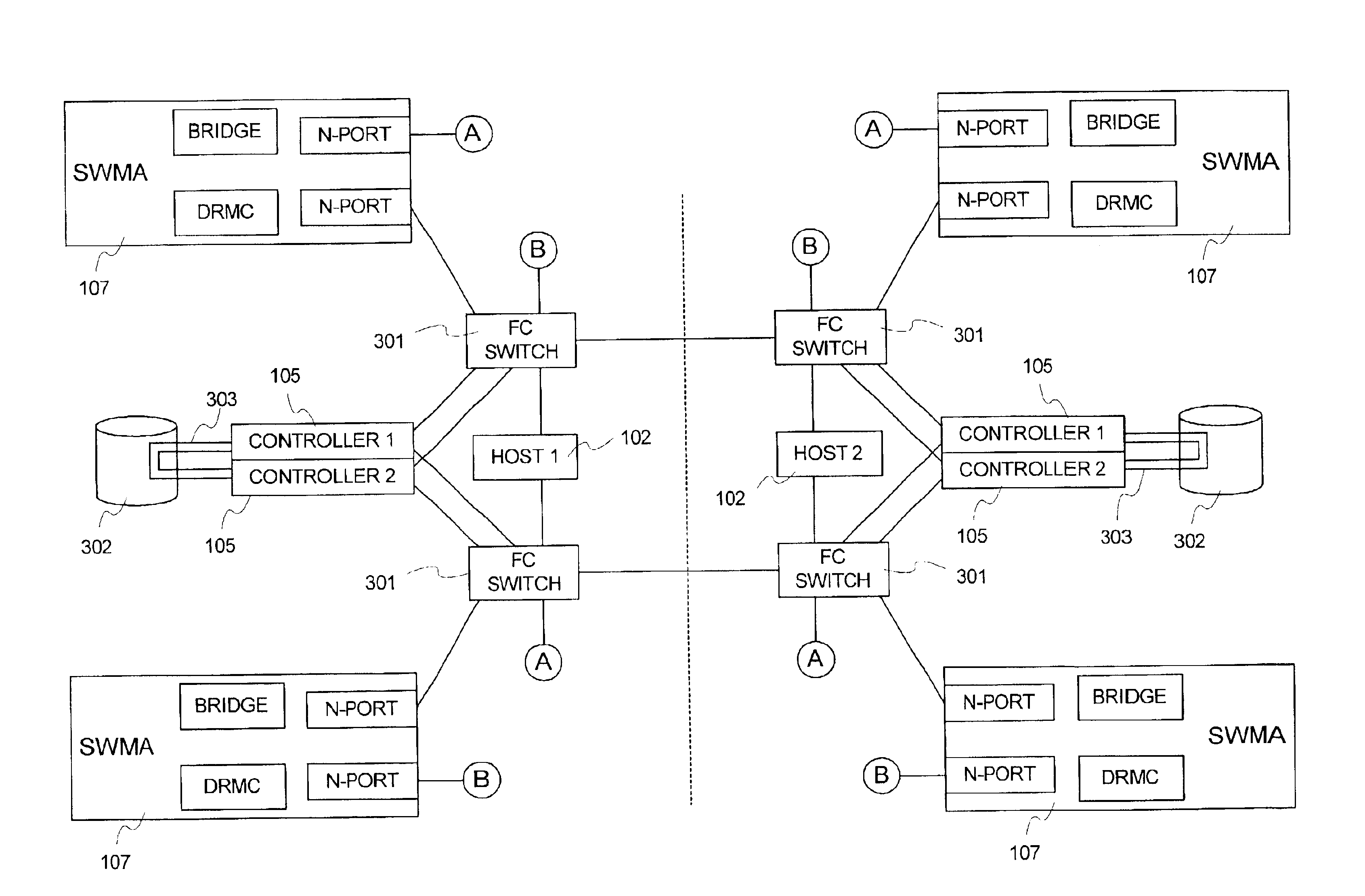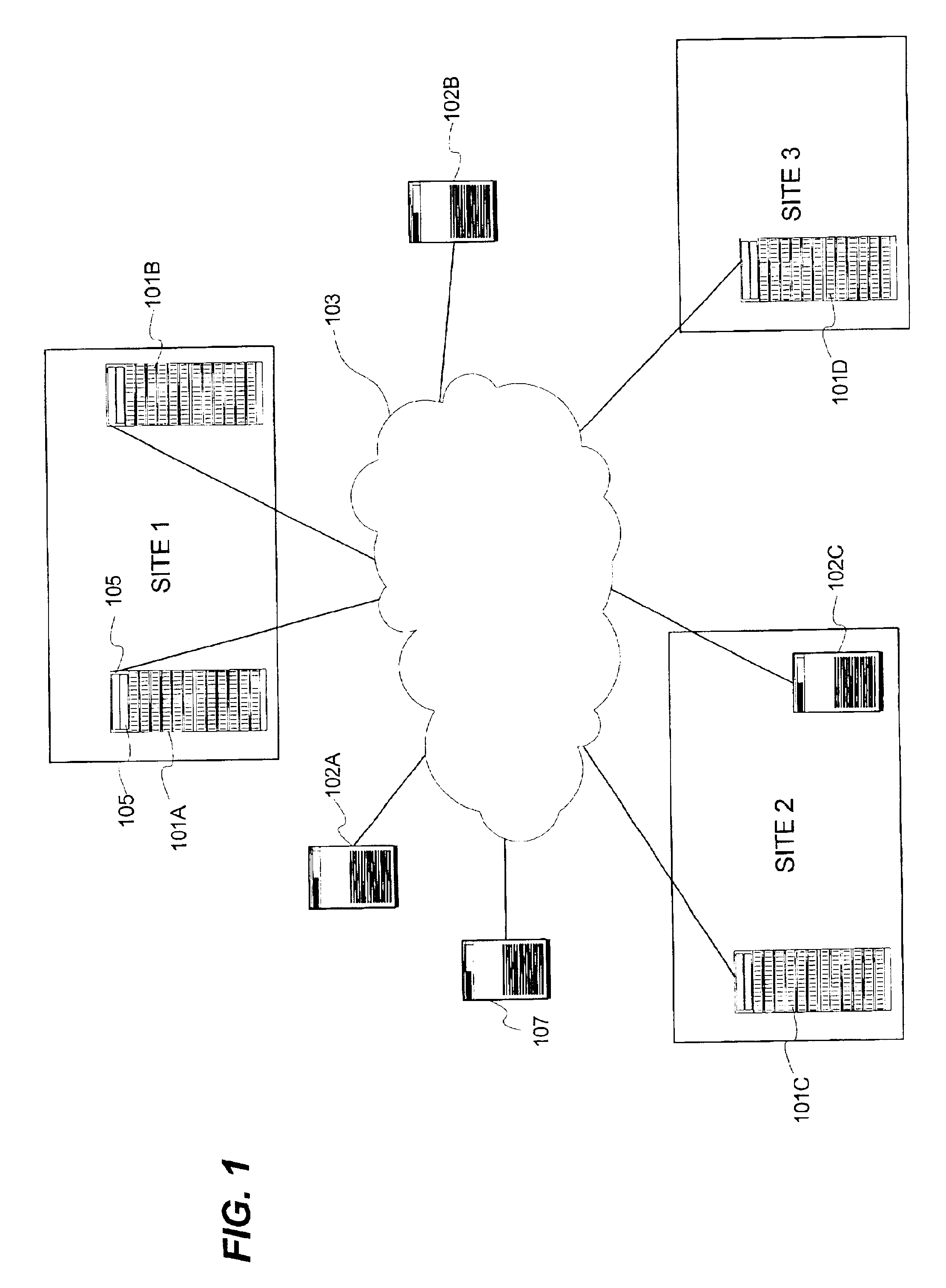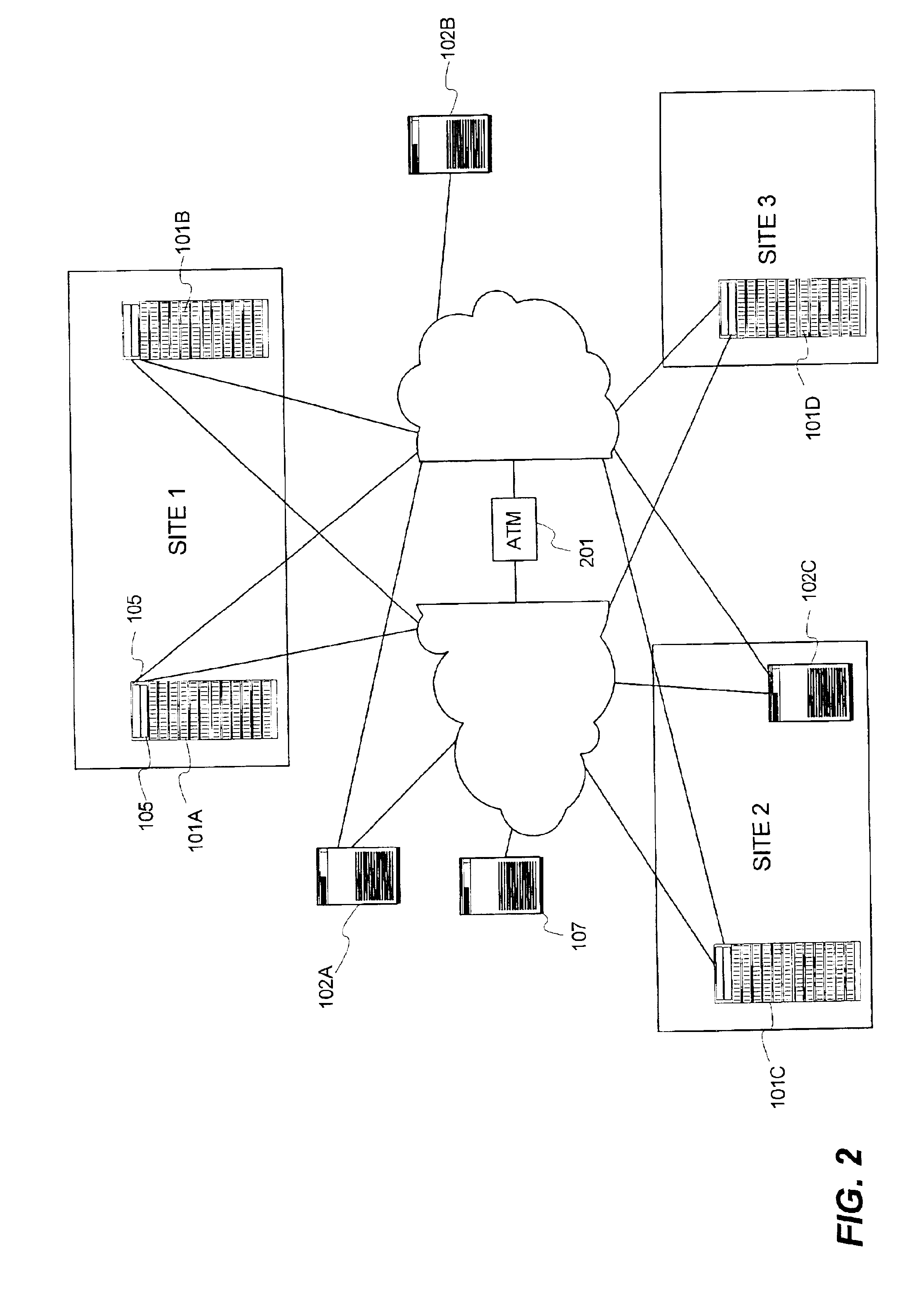Flexible data replication mechanism
a data replication and flexible technology, applied in the field of data storage system error recovery, can solve the problems of large time and expense, many of these operations required significant manual intervention, and the effect of replicating provided little benefit until failur
- Summary
- Abstract
- Description
- Claims
- Application Information
AI Technical Summary
Problems solved by technology
Method used
Image
Examples
Embodiment Construction
[0021]In general, the present invention describes a data replication management (DRM) architecture comprising a plurality of storage cells interconnected by a data communication network such as a fibre channel fabric. The present invention emphasizes symmetry and peer-cooperative relationships amongst the elements to provide greater flexibility in configuration and operation. Storage cells are for the most part autonomous units of virtualized storage that implement hundreds of gigabytes to terabytes of storage capacity. In accordance with the present invention, each storage cell can act as a source or primary location for data storage, and at the same time act as a destination or secondary location holding a replica data from a primary location of another storage cell. Similarly, the architecture of the present invention seeks to minimize rigid roles placed on interface ports and connections such that all available connections between components can support both host data traffic (e...
PUM
 Login to View More
Login to View More Abstract
Description
Claims
Application Information
 Login to View More
Login to View More - R&D
- Intellectual Property
- Life Sciences
- Materials
- Tech Scout
- Unparalleled Data Quality
- Higher Quality Content
- 60% Fewer Hallucinations
Browse by: Latest US Patents, China's latest patents, Technical Efficacy Thesaurus, Application Domain, Technology Topic, Popular Technical Reports.
© 2025 PatSnap. All rights reserved.Legal|Privacy policy|Modern Slavery Act Transparency Statement|Sitemap|About US| Contact US: help@patsnap.com



